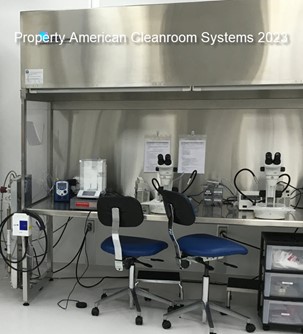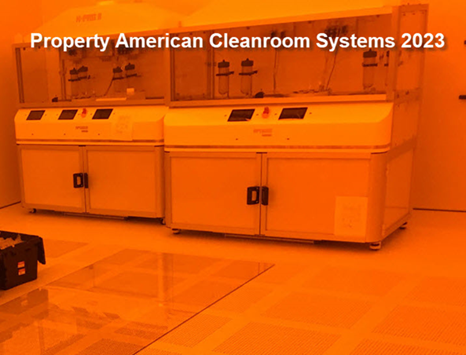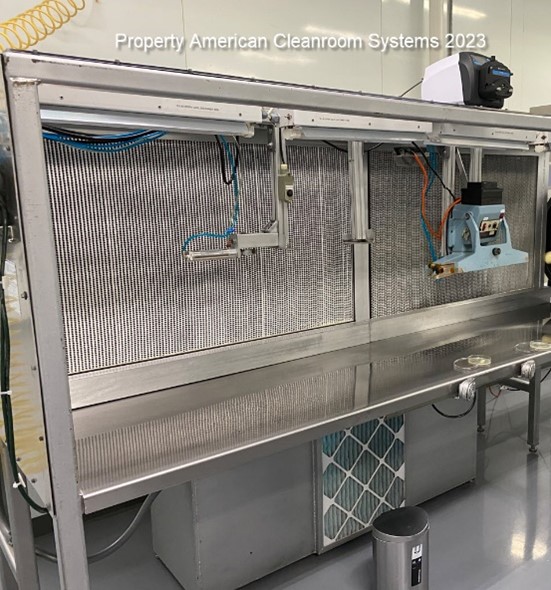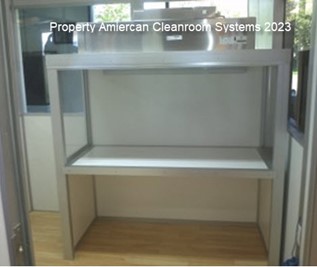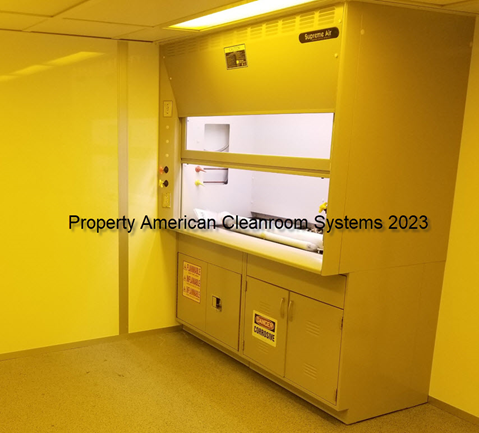Cleanroom benches are work stations that have built-in HEPA filter systems to provide a higher level of cleanliness than the surrounding cleanroom. For example, it is common to use a class 100 (ISO-5) cleanroom bench inside a class 10k (ISO-7) cleanroom.
Cleanroom fume hoods are work stations that typically exhaust air from the hood outside of the cleanroom. The objective is to provide a safe place to use chemicals while removing the chemical fumes from the cleanroom space.
Cleanroom Benches
Cleanroom benches are either vertical or horizontal air flow to protect the work surface from contaminants. In vertical cleanroom benches, the HEPA filters air flows from the top of the bench downward, providing a continuous laminar flow of cleanroom air onto the work surface. On horizontal cleanroom benches the air flows from the back wall of the bench.
Clear vinyl curtains or plexiglass shields are often hung on the front of bench to keep contaminants from entering the work area.
Cleanroom benches are typically fabricated from painted steel. However, for increased chemical resistance stainless steel is sometimes used although it makes the bench much more expensive.
De-ionizers are sometimes placed inside cleanroom benches to reduce static build up which can damage electronic products.
Cleanroom Fume Hoods
Chemical resistance is very important in cleanroom fume hoods. As result cleanroom fume hoods work surfaces are typically manufactured from chemically resistant materials like polypropylene or stainless steel.
Cleanroom hoods often have glass or plexiglass sliding doors to allow the exhaust cfm to be reduced when the hood is not in use. These doors can either open sideways or vertically. When the cleanroom hood door slides down vertically it is called a sash.
There are also ductless fume hoods which use charcoal filters to capture chemical fumes instead of exhausting the cleanroom fume hood air outside the building.
UV disinfection lamps are sometimes placed in cleanroom fume hoods to sterilize the hood during non-working hours. Typically, these lamps have secondary colored lighting element to notify cleanroom personnel that the lights are on.
Summary: Cleanroom benches use internal HEPA filtration to protect the work surface from contaminants. Cleanroom fume hoods exhaust the hood air outside of the building to protect works from dangerous or noxious chemical fumes.

